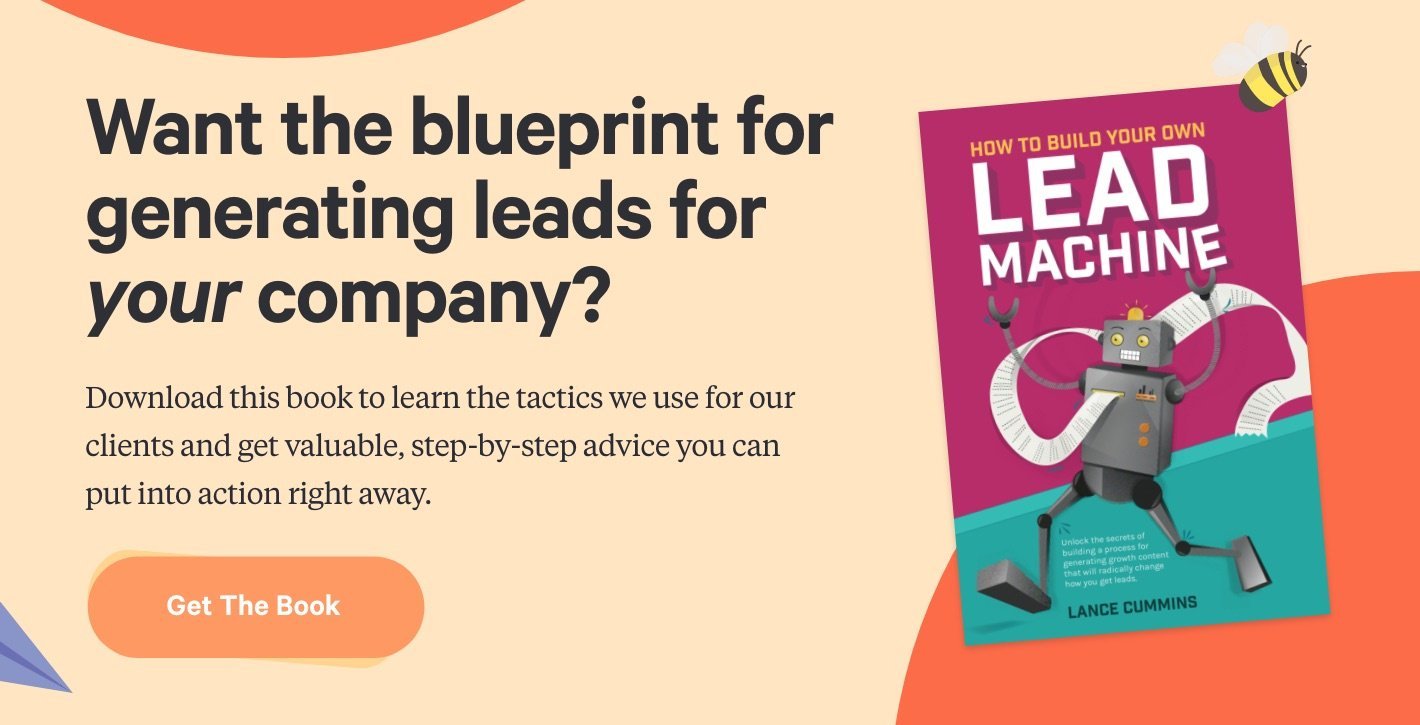10 Essential Steps To Writing A Great Website Header For Your Lead-Converting Website


by Tiffany Nix • 3 minute read • December 16, 2015

A really good example of a really bad website header.
Are you surprised to learn that there are 10 steps involved in writing a single sentence for your homepage? Believe it or not, companies with the most successful lead-converting websites put hours of effort into crafting these few short words.
What do they know that you may not?
For one, they understand that the website header on your homepage could be the determining factor in a visitor either sticking around to learn more about your company or saying “no thanks” and going to a competitor’s site.
If you’re ready to write a website header that actually converts (instead of one that just sounds catchy), here are the steps you need to take.
#1: Come to terms with the fact that this website header isn’t about you.
You may already know this simple secret behind great marketing:
Make your message about your potential customer—not about your company.
At first glance, this appears to be an easy concept to grasp, but it can be difficult to put into practice. Why? Because it goes against our instincts.
People generally tend to think about themselves first. (We’re all guilty of this to a degree—I know I am!) So, naturally, we assume the reasons our potential customers love our company’s products and services are the same reasons that we love our company’s products and services. But that’s not the case.
The biggest hurdle in connecting with your prospects is figuring out why they would want what your company has to offer. And that’s what this entire header-writing process is about—stepping into your customers’ shoes to connect with them and guide them through the buying process.
#2: Define the goal of your headline.
The purpose of your homepage headline is simple: to get your website visitors to understand that you can solve their problem. If you can get an immediate virtual head nod when they land on your homepage, you’ll have a much higher chance of getting your visitors to take the next step.
It’s important not only that you define what that next step is, but also that you make sure it’s a reasonable one. Can you get your user to agree to a free trial of your software after reading only the website header? That might be too lofty of a goal. But could you get them to download a free white paper containing a solution to a problem they’ve been struggling with for months? That’s probably more reasonable.
But depending on who your ideal customer is, they may not be ready to even download a white paper. Sometimes the goal of your headline could be as simple as getting your visitor to read the next sentence or scroll down to learn more. Ultimately, you need to decide on the path you’d like them to take and use the website header (and the proceeding copy) to guide them through it.
What you don’t want to do is waste the most important words on your website with fluff! Knowing the purpose of your header will help you write it strategically.
#3: Create buyer personas.
If you haven’t already created buyer personas, drop everything and do it right away. (I’m serious.) Researching and defining your target audience gives you insight into exactly who you’re trying to reach when you market your products and services. Typically, companies have 2-3 key personas who buy their products.
For more details about buyer personas and step-by-step instructions on how to create them, check out the buyer persona section of this 19,000-word inbound marketing plan.
#4: Figure out what main pain point your personas have in common.
With defined buyer personas handy, you’re ready to start thinking about the content of your headline. Since you likely have multiple personas, you’ll need to craft a single message that speaks to each of them.
You might be thinking, “But couldn’t I just write multiple headlines—one for each persona? That way, we’d be sure to reach all of them.” Resist the urge to do this. Have you ever visited a website with one of those scrolling sliders at the top of the homepage? Organizations that use sliders may mean well, but giving a visitor multiple messages to sift through puts the burden of deciding what’s important back on them. And that burden makes it difficult for the user to know what to do next. (There are also some other reasons we hate sliders, which are summarized well in this article.)
If you want a sleek, easy-to-follow homepage that will guide your users through the buying or conversion process, you need to stick with a single headline—you can personalize messages for specific personas elsewhere.
So how do you come up with a single message that will reach multiple personas? Find the common problem that all your personas are trying to solve. If you’re into mathematical terms, it’s like determining the least common multiple. What’s the pain point that all your personas have in common that your product or service can fix? That’s what you should address in your headline.
#5: Determine the main benefit of what you offer.
There’s a difference between a feature and a benefit. You probably love to talk about the features of the product your company offers. (And they may be great—who could blame you?) But your prospects don’t care about the features. They care about the benefits those features provide them.
So do your visitors a favor and get straight to the point. Don’t make them guess or interpret how your product or service may benefit them—tell them directly.
(This is great advice to keep in mind for all your website copy!)
#6: Start writing.
Now that you know your personas, the common pain point between them, and how your product or service can benefit them, it’s time to start writing website headers. You won’t get it on your first shot, so start by writing as many as you can! It’s important to get all your ideas down on paper before you begin narrowing down your options.
In this phase, you’ll want to keep three things in mind:
- Don’t get too clever. “Market-y” slogans are fun to write, but many times, they’re not very effective. You can (and should) be creative, but don’t forget the goal of your header in this process. Telling your visitor where they’ve landed and how your company can help is simpler than you might think.
- Don’t use buzzwords. Don’t get caught up in industry jargon—what’s everyday language to you could be completely foreign to your personas. Use the words they would use to describe their pain points and the benefits of what you offer. (That’s one of the reasons keyword research is so valuable—it helps you discover the exact phrasing your customers use when they’re searching for a solution to their problem.) Choose your words carefully, and above all, make sure your visitor understands what you’re trying to tell them!
- Be positive. Because you want your reader to connect with your header, make sure it’s positive and that it advocates for them. Phrasing your message in the form of a question is tempting, but a question has the potential of making your visitor feel uncomfortable.
Here’s what I mean:
MailChimp’s current homepage website header reads, “Send Better Email” (which is wonderful!). But, what if it were phrased as a question—“Could You Send Better Email?” It seems almost accusing! If I were their persona, I could get defensive and think, “Yes, I know I could do better. I want to. That’s why I’m searching for solutions!” But when I read “Send Better Email,” my initial response is “Yes! I’m interested.” (It’s that virtual head nod we talked about in step #2.)
#7: Research effective headlines.
There’s a reason this step comes later in the process. Before you research what other companies are doing, you need to first focus on your company and your buyer personas.
A company like Basecamp may have a great headline (and they do!), but you aren’t Basecamp. It’s important to look at how successful companies market, but don’t copy what they do “just because.” The reason their marketing is successful is because they’ve spent time crafting a unique message for their specific audience.
So, do some research on great website headers, but don’t emulate a company’s headline just because it sounds cool. Remember that your company’s purpose, personas, products and services, and goals are all unique—and your headline should be, too.
#8: Pick a few of your favorites and whittle each one down.
Great writers keep things simple. And as you likely just found in the research phase, the best website headers make every word count. So take the headlines you’ve written and whittle them down as much as possible. Think “billboard” rather than “introductory sentence.”
If you want to make sure you’re doing this effectively, read everything this guy has ever written. (It’ll change your writing life.)
#9: Get a few other opinions.
At this point, you’re probably going to be way too involved with the header to make a final decision on your own. So after you’ve chosen your favorite few, send them over to several people on your team for their opinions. (Make sure to tell them about your process so far and what you’re going for, though. You don’t want anyone’s opinion on the project who doesn’t know your personas or the goal of the headline!)
#10: Arrive at the best website header for your site, and watch conversion happen.
It’s time to make a final decision! But don’t worry—after putting this much care into your website header, you’re bound to have a great one!
Don’t stop here.
Continue to test and refine not only your homepage headline, but all the copy on your site. You may be surprised how huge of an impact a few small website tweaks could have on your conversion rate and, ultimately, your revenue.
Have a great website header? Leave it in a comment below—I’d love to read it!
